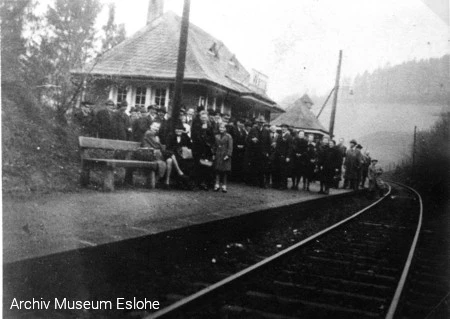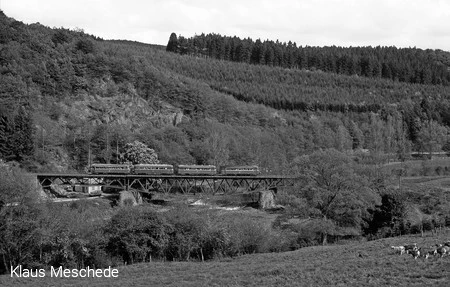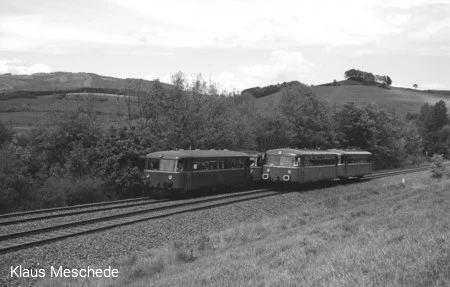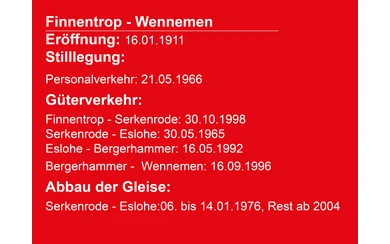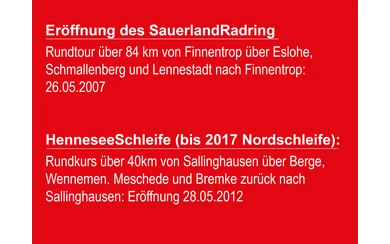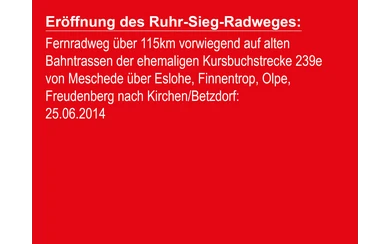Wenne stop - fish belly girder bridge
Railroad history
The bridge over the Wenne River and the country road (line km 24.45) near Wenholthausen is a special feature of the railroad line from Finnentrop to Wennemen in terms of railroad and technical history. The bridge structure was built in 1909. The three steel structures rest on concrete piers with quarry stone cladding. The country road is bridged by a 27 m long parallel chord truss with bottom chords. This is followed by a fish-bellied girder 44 m long as a river bridge, a 12.5 m long parallel chord truss as a flood bridge and the abutment. It was and is the largest bridge structure on the former railroad line from Finnentrop to Wennemen. After a truck hit the bridge in May 1992, it was closed to rail traffic. It has been a listed building since 1994.
The house of Ignatz Schulte (later the Wrede family) on the country road directly next to the bridge was left standing during the railroad construction despite the offer of a generous settlement. The Bauerdick family sold their small agricultural property, located about 100 m in the direction of Gut Wenne, and moved to Echthausen near Wickede. Almost at the same time as the aforementioned line, the branch line from Fredeburg to Wenholthausen was built. The tracks of both lines met about 100 m behind the bridge and ran parallel until Wenholthausen station. Between the stations Bremke and Wenholthausen the "Haltepunkt Wenne" was established near the fish-belly girder bridge, almost 3 km away from the center of Eslohe.
It was used for decades by the people of Eslohe, especially the "knitting women" from Eslohe and the surrounding area used this stop and took the train in the direction of the "stocking town" Schmallenberg. They had found work at the Falke company and other knitting factories. The agricultural students from the Schmallenberg area got off at the Wenne stop to travel from here via the so-called "Polizeiweg" to the Wennerstieg and to Eslohe to the winter school.
Picture 1: Workers and employees of the Koenig company await the arrival of the steam train for the company outing at the Wenne stop in the 1930s (Photo: Archive Museum Eslohe)
Photo2: A special railcar train on the fish belly girder bridge on June 2, 1984 (Photo: Klaus Meschede)
Photo3: Two railcar special trains at the branch line near the fish belly girder bridge (June 2, 1984) (Photo: Klaus Meschede)
